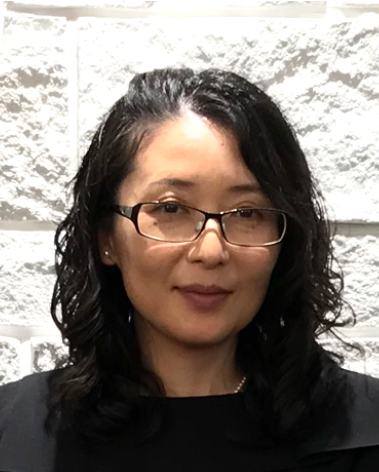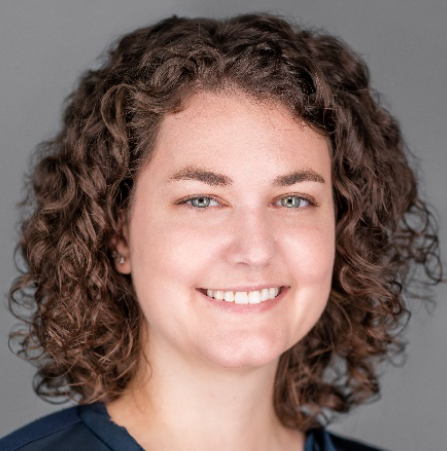WEBINAR SERIES:
Oxidative Stress: Biochemical and Pharmacological aspects
15:00-17:00 Central European Time (CET= GMT+1= UTC+1)
March 3rd, 2022
15:00-17:00 Central European Time (CET= GMT+1= UTC+1)
Participation is free of charge but registration is compulsory at www.antiox.it
Luciano Saso, Faculty of Pharmacy and Medicine, Sapienza University of Rome, Italy
Antonio Cuadrado chair of BenBedPhar, Departmento fo Biochemsitry, Faculty of Medicine, Autonomous University of Madrid
NRF2 is a master transcription regulator that coordinately regulates many cytoprotective genes and plays a central role in defense mechanisms against oxidative and electrophilic insults. While increased NRF2 activity is principally beneficial for our health, outcome of NRF2 activation in cancer cells is detrimental which is observed in almost 15% of non-small cell lung cancer (NSCLC). We conducted an unbiased approach by investigating NRF2-dependent transcriptome in NSCLC cell lines with NRF2 activated NSCLCs, and in those with NRF2-normal NSCLCs. We identified a battery of genes that are regulated by NRF2 specifically in NRF2-activated NSCLCs and found that these genes are accompanied by unique NRF2-dependent enhancers. CEBPB accumulation in NRF2-activated NSCLCs is found to be one of the prerequisites for the establishment of the unique enhancers, in which NOTCH3 enhancer is critical for the promotion of tumor-initiating activity. To understand NRF2-CEBPB cooperativity in more detail in NRF2- activated NSCLCs, we comprehensively explored NRF2-CEBPB-coregulated genes by comparing the NRF2- and CEBPB-dependent transcriptomes in NRF2-activated NSCLC cell lines. Genes involved in drug metabolism and detoxification were found to be enriched in the coregulated genes accompanied by NRF2-CEBPB-coregulated enhancers. These results suggested that enhanced activities of stem-like phenotype, drug metabolism and detoxification are achieved by the cooperative function of NRF2 and CEBPB in NRF2-activated NSCLCs.

Hozumi Motohashi is a full professor at the Department of Gene Expression Regulation, Institute of Development, Aging and Cancer (IDAC), Tohoku University. She received MD/PhD from Tohoku University Graduate School of Medicine, Japan, in 1996. Her thesis was on the regulatory mechanism and in vivo function of MafK, one of the small Maf transcription factors. After the commencement, she was assigned to a research assistant professor at University of Tsukuba in Masi Yamamoto’s lab. She worked on the clarification of function and biological significance of CNC-sMaf transcription factors. After she moved to Tohoku University in 2006, she has been focusing on response mechanisms to various internal and external oxidative/xenobiotic stresses and contributions of NRF2, one of the CNC transcription factors, to the maintenance of homeostasis. Especially, she is interested in NRF2 roles in various pathological conditions including cancers. NRF2 functions and its contribution to cellular homeostasis seem to be altered in cancer cells with persistent activation of NRF2 compared with normal cells that exhibit transient activation of NRF2 only when it is necessary. When she started her own lab in 2013, NRF2 addiciton in cancer has been one of her main research topics. She is trying to understand the unique activity of NRF2 in NRF2-activated cancer cells from the viewpoint of epigenetic regulation and metabolic regulation.
Nuclear factor erythroid 2-like 2 (NRF2) is a transcription factor that confers cellular protection against oxidative, proteotoxic and metabolic stress. NRF2 has been shown to act as a master regulator, controlling many cellular processes via crosstalk with other signaling pathways. Through detailed mechanistic investigations, KEAP1 has been shown to be the primary regulator of NRF2 by functioning as a substrate adaptor of the KEAP1-CUL3-RBX1-E3 ubiquitin ligase. KEAP1 acts as a sensor for electrophilic or redox active xenobiotic agents through a series of redox sensing cysteines, most prominently Cys151. This KEAP1 action controls NRF2 protein levels to maintain cellular redox homeostasis. In normal cells, activation of NRF2 by chemopreventive compounds confers protection against cancer. Therefore, a great deal of effort has been geared toward identification of small synthetic molecules or natural products that inactivate KEAP1-CUL3-RBX1 and increase NRF2 levels. We have discovered many chemopreventive small molecules that activate NRF2 and are effective for disease prevention. Most of these NRF2 inducers activate NRF2 through covalent adduction to KEAP1-C151. However, many of these reactive compounds suffer from off-target effects. New strategies in developing a new class of NRF2 inducers with less off- target toxicity will be discussed. Functional analyses of NRF2 have demonstrated a dual role for NRF2 in cancer. In 2008 we presented the unprecedented concept of the dark side of NRF2, demonstrating that NRF2 promotes cancer progression and chemoresistance. As such, cancer cells with high expression of NRF2 are more resistant to cancer treatment, and clinically these patients have a poor prognosis. We provided strong evidence that inhibiting NRF2 renders cancer cells more susceptible to chemotherapeutic drugs. This work has led to a paradigm shift in viewing NRF2 as a “tumor suppressor” to an “oncogene”. These studies, revealing the dark side of NRF2, strongly argue for the need to develop small molecule inhibitors of NRF2. Building on this idea, we reported the first rationally discovered compound, brusatol, that inhibits the NRF2 pathway. Brusatol was able to overcome both intrinsic and acquired chemoresistance both in vitro and in vivo (Kras G12D lung cancer model). However, further work revealed that brusatol might have off-target effects at high doses, in addition to being a synthetically challenging, complex natural product, limiting the potential of developing brusatol into a drug. Since then, several other NRF2 inhibitors have been reported. However, to date, there are no inhibitors that directly target NRF2 with a defined mode of action in development. In this talk, I will discuss the importance of specific NRF2 inhibitors and the challenge in identifying NRF2-targeted inhibitors.

Donna Zhang, Ph.D. is a Full Professor of Pharmacology and Toxicology at the University of Arizona. She is a Musil Family Endowed Chair in Drug Discovery and an Associate Director of the University of Arizona NIEHS Superfund Research Program. Dr. Zhang got her Ph.D. in Molecular Toxicology at New York University in 1997, and then trained as a postdoctoral fellow at DuPont-Haskell Laboratory. She has been at the University of Arizona since 2005. As a trained toxicologist, understanding how the human body responds to and defends against environmental contaminants (i.e. via the NRF2 response) to alleviate subsequent damage/pathogenesis, particularly in the context of arsenic exposure, has been a cornerstone of her research. Over the past 20 years, she has become an internationally recognized leader in the field of the NRF2-KEAP1-ARE signaling pathway. She has published over 150 well-received papers, as evidenced by her total number of citations (29601) and h-index (67) [Google Scholar as of February 22, 2021]. She has made seminal contributions to both the mechanistic understanding of NRF2 regulation, as well as the role of NRF2 in human disease, with an emphasis on cancer and diabetes. She has mentored numerous Ph.D. students and postdoctoral fellows, who have successful careers as professors in environmental health-related research or are lead toxicologists in industry, and one that is an associate editor of Cancer Cell.
Redox regulators are emerging as critical mediators of lung tumorigenesis. Notably, NRF2 and its negative regulator KEAP1 are commonly mutated in human lung cancers. These mutations lead to NRF2 accumulation and constitutive expression of NRF2 target genes, many of which are at the interface between antioxidant function and anabolic processes that support cellular proliferation. One such metabolic process is the uptake and metabolism of the amino acid cysteine, which is required for maintaining cellular redox homeostasis in both normal and transformed cells. In this talk, the influence of NRF2 on intracellular cysteine levels and usage will be discussed, as well as additional metabolic processes that influence cellular responses to cysteine excess and limitation.

Gina DeNicola is an Associate Member (Associate Professor) in the Department of Cancer Physiology at Moffitt Cancer Center in Tampa, Florida (https://lab.moffitt.org/denicola/). She received her B.S. in Biochemistry and Molecular Biology from the Pennsylvania State University (2000) and her PhD in Cell and Molecular Biology from the University of Pennsylvania (2010). Her early work has established an oncogenic function for the transcription factor NRF2 in cellular transformation and tumorigenesis in vivo and contributed to our understanding of metabolic reprogramming by NRF2. At Moffitt Cancer Center, Dr. DeNicola’s current research interests involve the use of cell culture and mouse models together with mass spec metabolomics to understand how alterations in redox biology contribute to metabolic deregulation and tumorigenesis in vivo. She is the recipient of the PanCAN-AACR Pathway to Leadership Award, the V Foundation Scholar Award, and an R37 MERIT award from the NCI. Dr. DeNicola is on the scientific advisory board for several cancer charities, including Pancreatic Cancer UK and Hope Funds for Cancer Research, and is on the editorial board for Cancer & Metabolism.
COST (European Cooperation in Science and Technology) is a funding agency for research and innovation networks. Our Actions help connect research initiatives across Europe and enable scientists to grow their ideas by sharing them with their peers. This boosts their research, career and innovation.
Grant Holder: Universidad Autónoma de Madrid
Start of Action: 19 October, 2021
End of Action: 18 October, 2025
CSO approval date: 25 May 2021
Action email: info@benbedphar.org
© 2022 BenBedPhar | Design by Tuinbit Group